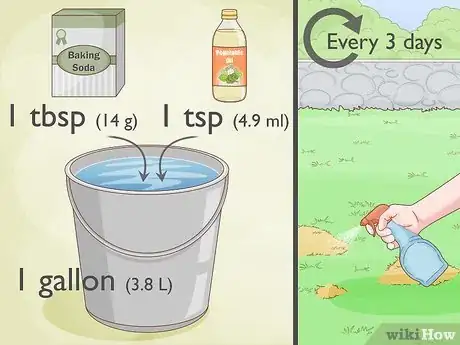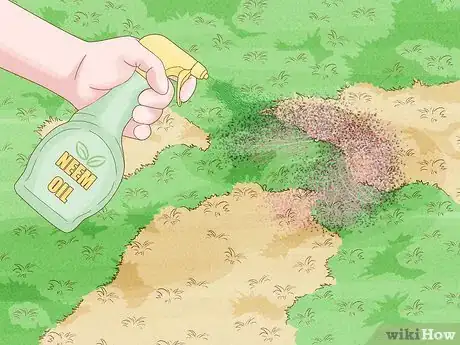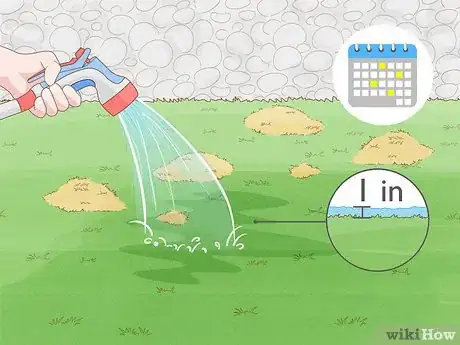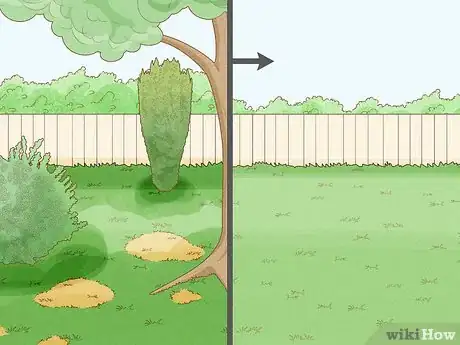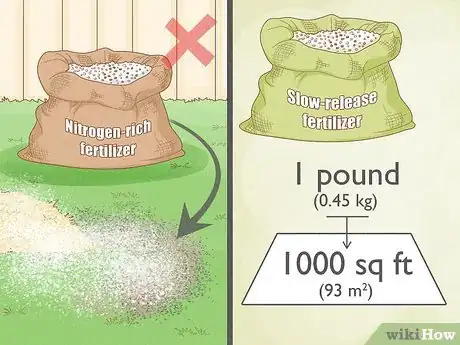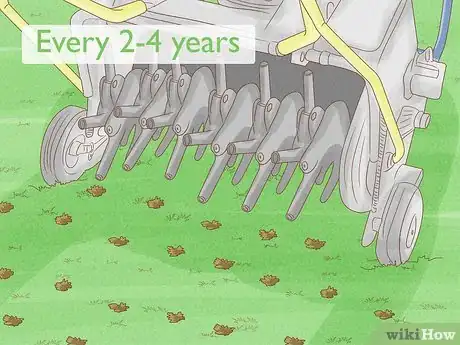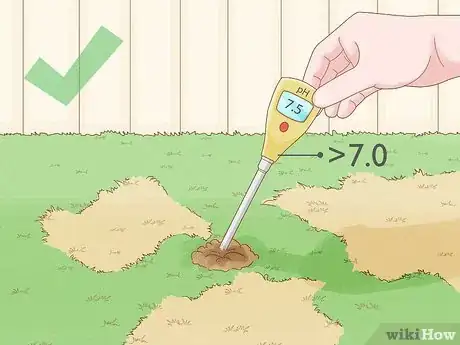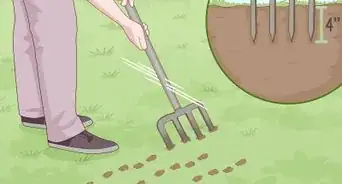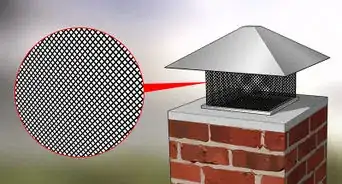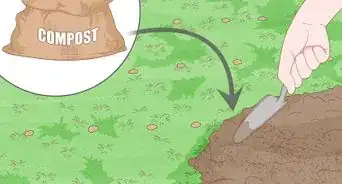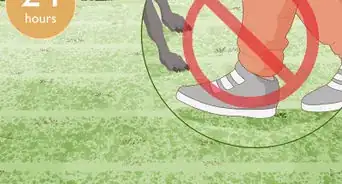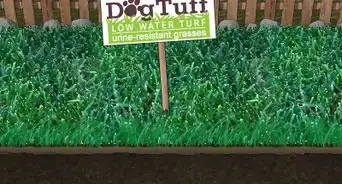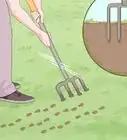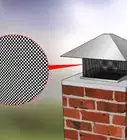This article was co-authored by wikiHow staff writer, Hunter Rising. Hunter Rising is a wikiHow Staff Writer based in Los Angeles. He has more than three years of experience writing for and working with wikiHow. Hunter holds a BFA in Entertainment Design from the University of Wisconsin - Stout and a Minor in English Writing.
There are 11 references cited in this article, which can be found at the bottom of the page.
This article has been viewed 19,773 times.
Learn more...
It’s the worst feeling when you work hard taking care of your lawn only for it to develop large brown or yellow patches of fungus. Rather than using chemical fungicides that could harm other wildlife, there are a few natural treatments you can try. We’ll start by going over a couple of organic options that kill mild fungus and move on to preventative steps you can take to keep your lawn healthy and thriving!
Steps
Community Q&A
-
QuestionWhat is a natural remedy for lawn fungus?
 Drew Hawkins1Community AnswerIf you're dealing with just a small spot of fungus, your best bet is to use a baking soda and oil mixture. It's super simple. Mix together 1 tablespoon (14 g) of baking soda, 1 teaspoon (4.9 ml) of vegetable oil, and 1 gallon (3.8 L) of water, and thoroughly mix them together. Pour the mixture into a garden sprayer and apply it directly to any patches of fungus in your yard. Keep applying the solution for at least 3 days until the fungus clears up.
Drew Hawkins1Community AnswerIf you're dealing with just a small spot of fungus, your best bet is to use a baking soda and oil mixture. It's super simple. Mix together 1 tablespoon (14 g) of baking soda, 1 teaspoon (4.9 ml) of vegetable oil, and 1 gallon (3.8 L) of water, and thoroughly mix them together. Pour the mixture into a garden sprayer and apply it directly to any patches of fungus in your yard. Keep applying the solution for at least 3 days until the fungus clears up. -
QuestionCan grass recover from fungus?
 Drew Hawkins1Community AnswerYes! As long as you can knock out the fungus, your grass will grow repair and grow back. You won't even be able to tell you ever had fungus. Try using neem oil to treat the fungus and take out any pests that may be eating your grass as well. Neem oil comes in different concentrations, so read the instructions on the bottle to see how much water you need to mix in. Add the neem oil into a garden sprayer and mist the fungus on your lawn in the morning. Spray the patches once every week until it completely clears up.
Drew Hawkins1Community AnswerYes! As long as you can knock out the fungus, your grass will grow repair and grow back. You won't even be able to tell you ever had fungus. Try using neem oil to treat the fungus and take out any pests that may be eating your grass as well. Neem oil comes in different concentrations, so read the instructions on the bottle to see how much water you need to mix in. Add the neem oil into a garden sprayer and mist the fungus on your lawn in the morning. Spray the patches once every week until it completely clears up. -
QuestionHow do you kill fungus in your lawn?
 Drew Hawkins1Community AnswerThere are a couple of ways you can kill fungus on your lawn and keep it from coming back. If you're looking for a natural, homemade solution, combine 1 tablespoon (14 g) of baking soda, 1 teaspoon (4.9 ml) of vegetable oil, and 1 gallon (3.8 L) of water, and thoroughly mix them together. Add the solution to a sprayer and apply it to any patches of fungus on your grass for up to 3 days until it clears up. You can also use neem oil. Pick up some neem oil concentrate and mix it with water according to the directions on the packaging to properly dilute it. Use a garden sprayer to apply it to any fungus on your grass once a week until it clears up. You can also spread cornmeal over any areas where fungus just seems to keep coming back. Cornmeal has antifungal properties that can help clear up the fungus and keep it from returning.
Drew Hawkins1Community AnswerThere are a couple of ways you can kill fungus on your lawn and keep it from coming back. If you're looking for a natural, homemade solution, combine 1 tablespoon (14 g) of baking soda, 1 teaspoon (4.9 ml) of vegetable oil, and 1 gallon (3.8 L) of water, and thoroughly mix them together. Add the solution to a sprayer and apply it to any patches of fungus on your grass for up to 3 days until it clears up. You can also use neem oil. Pick up some neem oil concentrate and mix it with water according to the directions on the packaging to properly dilute it. Use a garden sprayer to apply it to any fungus on your grass once a week until it clears up. You can also spread cornmeal over any areas where fungus just seems to keep coming back. Cornmeal has antifungal properties that can help clear up the fungus and keep it from returning.
Warnings
- Fungicides are normally used as a preventative treatment, so at-home applications may not be effective if you already see symptoms of lawn fungus. If you aren’t able to remove the fungus on your own, contact a professional turf service to remove it for you.⧼thumbs_response⧽
References
- ↑ https://youtu.be/NV7Nv-YuDVY?t=89
- ↑ https://www.news4jax.com/features/2021/02/17/is-fungus-or-mold-growing-in-your-lawn-heres-how-to-stop-it/
- ↑ https://todayshomeowner.com/how-to-use-neem-oil-in-your-garden/
- ↑ https://images.homedepot-static.com/catalog/pdfImages/d1/d155a73a-c66d-4904-886f-6439e9dcf355.pdf
- ↑ https://youtu.be/8xcSIEvCRYw?t=52
- ↑ https://youtu.be/8xcSIEvCRYw?t=123
- ↑ https://www.almanac.com/content/common-lawn-problems-and-solutions
- ↑ https://www.bobvila.com/articles/lawn-fungus/
- ↑ https://www.thedailygardener.com/treat-lawn-fungus-naturally
- ↑ https://hgic.clemson.edu/factsheet/brown-patch-large-patch-diseases-of-lawns/
- ↑ https://www.almanac.com/content/common-lawn-problems-and-solutions
- ↑ https://www.bobvila.com/articles/lawn-fungus/
- ↑ https://www.popularmechanics.com/home/a27194977/lawn-dethatcher/
- ↑ https://www.bobvila.com/articles/lawn-fungus/
- ↑ https://www.almanac.com/content/common-lawn-problems-and-solutions
- ↑ https://www.thedailygardener.com/treat-lawn-fungus-naturally
- ↑ https://www.almanac.com/content/common-lawn-problems-and-solutions
